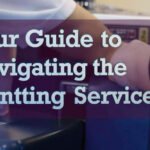
- comelyweb@gmail.com
- Composer Portfolio
- August 18, 2025
- No Comments
Building a Composer Portfolio That Truly Sings
Introduction: More than just notes on a screen
Putting your creative work out there? It can feel incredibly debilitating. You pour your soul into your music – the late nights wrestling with a melody, the excitement when a harmony finally clicks, the fine craftsmanship of every texture. Then comes the moment you need to show the world, potential clients, collaborators, or opportunities. Suddenly, that beautiful, intricate piece of your heart…needs to fit into a portfolio website. Gulp
Technical jargon, flashy templates, or “is this good enough?” It’s easy to get lost in the paralyzing fear of. But here’s the secret: Your Composer portfolio isn’t just a digital resume. This is your invitation to the world of sound. This is your chance to tell your story, showcase your unique voice, and connect with the people who absolutely need what you have to offer. Forget sterile perfection; Let’s create something authentic, effective, and real you.
Why Your Composer Portfolio Isn’t Optional (It’s Your Sonic Handshake)
In a world full of noise (literally and figuratively!), having a dedicated space for your music is not a luxury. It is important. Think about it:
- First impressions matter (a lot): Whether it’s a film director scrolling through their phone, a game developer looking for fresh voices, or an advertising agency in need of the perfect track, your portfolio is often the first point of contact. It speaks quickly before you have a chance to say hello.
- Your 24/7 listening room: Unlike a meeting or temporary email attachment, your portfolio is always open. It works while you sleep, exercise, or take a coffee break. Potential clients can explore your work at their own pace, anytime, anywhere.
- Show, don’t just tell: you can say you’re versatile, or you excel at emotional underscores, or you make killer electronic beats. But nothing proves it like letting people listen. This is your ultimate proof of concept portfolio.
- Professionalism = Confidence: A well-maintained, easy-to-navigate portfolio signals that you take your craft and your business seriously. This builds credibility and makes it more likely to reach people.
- Centralizing Your Glow: Instead of scattering your best work across SoundCloud, YouTube, Vimeo, and Google Drive links buried in emails, your portfolio brings it all together in one cohesive, branded space. Easy for you to manage, easy for them to discover.
Simply put, not having one means you’re missing out on an opportunity, plain and simple. It’s like an incredible product but no storefront.
Foundation Construction: What really Needs to be in your Composer portfolio.
Okay, so we agree that this is important. Now, what does it do? Forget complicated formulas. Focus on clarity and impact:
- Your best work (quantity over quality!): It is non-negotiable. Be ruthless. Only include pieces that you’re genuinely proud of and that accurately represent the work you want to do. More 5-10 great tracks are infinitely better than 30 mediocre ones. Think of it as curating an art gallery, not throwing away a storage unit.
- Human Advice: Ask yourself, “If a potential client just listens to one piece on my site, which one would I like to make?” Make sure the piece is front and center and easy to find. Also, include pieces that are relevant to your Range (if you have one), but only if they meet the “stellar” criteria.
- Clean up the context of the project (the story behind the sound): Don’t just slap the audio player with “Track 07_FinalMix.mp3”. Tell the story.
- Title: Give the piece a name (even if it’s descriptive like “Epic Battle Trailer” or “Intimate Piano Reflection”).
- Media: What was it for? (For example, “Short Film: ‘The Last Light'”, “Video Game: ‘Chrono Rift’ – Forest Level”, “Ad: ‘Evergreen Hiking Gear'”, “Library Music Cue: Uplight Corporate”).
- Your Role: Be specific. “Composer and Sound Designer,” “Additional Music,” “Theme Composer.”
- Short description (optional but powerful): A sentence or two can add up to a lot. “designed to capture the protagonist’s inner struggle using minimal piano and subtle string textures,” or “a high-energy hybrid electronic track created to match fast-paced gameplay and futuristic visions.” It shows that you understand the narrative and intent.
- Human Advice: If possible, add a link to watch the final video/game scene! Seeing your music in action is incredibly compelling. If you can’t (due to NDAs, etc.), consider creating simple mockup visuals with audio – even a static image that represents the vibe of the project.
- Who are you (the person behind the piano): People connect with people. Add an “About” or “Bio” section.
- Keep it short and relevant: Focus on your musical journey, influences, what excites you about composing, and the specific areas you specialize in or love most (eg, orchestral film scoring, indie game music, experimental electronics).
- Show your personality (a little!): Are you passionate about vintage synths? Do you find inspiration in nature? Do you run out of complicated locks? Let a hint of your true self come out. Avoid overly formal, robotic language.
- A good picture: A friendly, professional-looking headshot helps make a connection. Skip the blurry selfie or overly dramatic Composed in a Cap shot (unless it’s real, your brand!)
- Human Advice: Write your bio in the first person (“I like to compose songs that…”). It feels more direct and personal.
- How to reach you (make it stupidly simple):
- Dedicated Contact Page: Don’t bury your contact information. Have a clear “Contact” link in your main menu.
- Required Information: At a minimum, a professional email address (eg, yourname@yourwebsite.comlookss looks better than composerdude92@gmail.com). Also, consider adding a contact form directly to the page.
- Optional but recommended: Links to relevant, professional social media profiles (LinkedIn is great, maybe a professional Instagram that showcases your process). Avoid linking to personal social media unless it is strictly portfolio/professional.
- Tip: Check your contact form. Regularly! Nothing kills an opportunity faster than a broken “Send” button.
Choosing Your Digital Stage: Where to Build Your Portfolio
You’ve got the content; Now you need a location. The options are many:
- Dedicated website (Yourname.com):
- Advantages: Maximum control, branding, professionalism, scalability. Seems most legitimate. You own the platform.
- Disadvantages: More setup required (domain, hosting, possibly learning a platform like WordPress or Squarespace) and possibly some cost (domain registration ~$15/year, hosting ~$5-$25/month).
- Best for: Composers are serious about their careers, want complete control, and a highly professional image. Essential for targeting high-end clients (film, TV, AAA games).
- Platforms: Squarespace, Wix, WordPress (with portfolio theme), Format, Carbonmade. Many offer composer-specific templates.
- Specific platform profiles (SoundCloud, Bandcamp, etc.):
- Advantages: Quick, free (or low cost to upgrade), easy setup, built-in audience discovery capability (especially SoundCloud).
- Disadvantages: Less control over design/branding, can look less professional than a standalone site, which is often seen more as a sharing platform than a formal portfolio. The organization or project context may have restrictions.
- Best for: Getting started, sharing work in progress, collaborating, building an initial audience. Can be used. Side by side, an important website is an additional channel.
- Human Advice: If you are using Soundcloud/Bandcamp as a Basic Portfolio, structure your tracks carefully, use strong descriptions/context, and make your profile bio concise and professional. Treat it like your main storefront.
- Showcase sites (composer-specific platforms like iCompositions, others):
- Advantages: Built for composers, community exposure potential, and often easy to use.
- Disadvantages: Less unique branding, you’re one of many, platform longevity can be uncertain at times, and fees can be.
- Best for: Additional exposure, niche communities. There is generally no substitute for a dedicated site or a well-designed SoundCloud/Bandcamp.
The decision? For serious professional aspirations, A dedicated website (yourname.com) is the gold standard. It’s an investment in your career that pays dividends in reputation. Start easy if needed, but aim for it.
Polishing Gems: Making Your Portfolio Shine (Without the Need for a Tech Degree)
Its construction is a step. Is making work Step two is.
- Navigation: Keep It Simple, Stupid (KISS): Your visitor should know where to go in seconds. Clear menu: “Work,” “About,” “Contact.” Maybe “Listen” or “Plans”. Avoid overly clever or confusing labels.
- Design: Clean and Functional Wins: You are a composer, not necessarily a web designer (unless you are!). Prefer:
- Readability: Easy-to-read fonts (sans-serif such as Arial, Helvetica, Open Sans are generally safe), sufficient contrast between text and background.
- Behavior: Improve photos! Large image files will slow down your site, frustrate visitors (and hurt SEO). Use compressed formats (JPEG for images, PNG for graphics/logos).
- Mobile friendship is non-negotiable: Most people will browse on a phone. Test your site extensively on mobile. If it looks broken or is difficult to use, fix it immediately. Platforms like Squarespace/Wix usually handle this well.
- Branding (junk is ok): Use a consistent color scheme and perhaps a simple logo (even just your name in a nice font). Your music is the star, not flashy GIFs or annoying animations.
- The audio player is king: Make sure it works flawlessly in all browsers (Chrome, Firefox, Safari, Edge). Autoplay usually occurs. A bad idea – Let the visitor choose when to listen. Make the play/pause button obvious.
- Power of “Listen Now” Button: On your homepage or portfolio page, put one or two of your own absolutely excellent, most representative pieces easily playable at the top right. Don’t force people to dig.
- Spell and grammar check (twice!): Typos scream unprofessionalism. Proofread everything carefully. Ask a friend with good grammar to check it too. “Composer” not “composer”!
- Call to Action (CTA): What do you want visitors to do? “Listen to my latest film score,” “Contact me for your project,” “Discover my game music.” Guide them gently.
Keeping the music going: Maintaining your portfolio
Your portfolio is not a “set it and forget it” project. It is a living document of your career.
- Update regularly: Add new, stronger work as you create it. Remove old pieces that no longer represent your best or current direction. Stale departments feel left out.
- Review and update: Perform a site-wide critical review every 6-12 months. Is the bio still valid? Is the contact information correct? Does the design feel dated? Is navigation still intuitive? Does it still reflect? Who are you now as a composer??
- Check everything: Click each link periodically, test the contact form, and play each track on different devices. Catch mistakes before potential clients do.
- SEO Basics (Don’t Panic!): While complex SEO isn’t necessary for most composers, the basics help people find you:
- Your name: Make sure your name appears prominently (especially in page titles and headings).
- Keywords: Naturally include terms like “composer,” “film composer,” “game composer,” “music for media,” and “[your city/region] composer” in your bio and project description.
- Image Alt Text: Briefly describe the images (eg, alt=” Musician John Smith recording in the studio”).
- Description Page Titles/URLs: instead of page1.html, use about-john-smith-composer.html.
Frequently Asked Questions: Your Composer Portfolio Questions, Answers (Humanly)
- Q: I’m just starting and don’t have many (or any) professional credits. What can I put in my portfolio?
- A: This is very common! Start with yourself. The best Pieces, whether for student films, personal projects, game jams, or specific work. Create mockups: compose music to a scene from a public domain movie or game trailer of your choice (clearly label it as a “Spec” or “Mockup” project). Show your skills and abilities. Quality and context matter more than big-name credits at this stage.
- Q: How much music should I include?
- A: Less is more! Seriously, aim for 5-10 pieces that are truly classy and representative. It’s better to leave out a fan favorite than to overwhelm someone or include weak tracks that dilute your impact. Think “greatest accomplishments,” not “accomplished work.”
- Q: Should I include different genres/styles?
- A: Only if you actively want and can work professionally in these styles. If you specialize in orchestral drama, focus on this. If you’re really good at both synth wave and chamber music, showcase both, but organize them clearly (perhaps separate sections). If you never want to write country music again, don’t include a country track just to show “range”.
- Q: Do I need a video for each piece?
- A: It is highly recommended, but not. Always seeing essential music in context is incredibly powerful. If you can’t show the final video (due to NDA, etc.), create simple visuals – a still image, a mood board, a short text description of the accompanying scene. Pure audio players are fine, but context elevates them.
- Q: How important is design? Can’t I just use a basic template?
- A: Design for usability and professionalism is important, but complex design is not required. Oh, A clean, simple, well-organized template is perfectly fine and often preferable. Focus on making it easy to listen to your music and find your contact information. Avoid clutter and anything that distracts from the audio. Function on flash.
- Q: I am not tech-savvy. How hard is it to set up a website?
- A: It’s easier than ever! Platforms like Squarespace, Wix, and WordPress.com offer drag-and-drop builders and composer-friendly templates. You don’t need to code. Many have step-by-step guides. Start simple – you can always add more features later. Consider it part of your professional development.
Conclusion: Press publish and let your music speak.
Building your composer portfolio isn’t about achieving some mythical standard of perfection. It’s about taking that important step to share your unique voice with the world in a clear, professional, and authentic way. It’s about making it easy for the right people to find you, hear your talent, and say, “Yes, this is the musician we need.”
Remember:
- Be ruthlessly selective: Quality beats quantity every time.
- Context is king: Tell the story behind each piece.
- Keep it human: Let a little bit of your personality shine through in your life and approach.
- Make it simple: Simple navigation, clear contact information, fast loading.
- Keep it fresh: Update it as you grow and create new work.
Don’t let fear or overthinking paralyze you. Start from where you are. Gather your best 5 pieces, write a simple bio, set up a basic Squarespace site, and hit publish. This process alone puts you ahead of musicians who hide their light.
Your music deserves to be heard. Your portfolio is the door. Open it. Polish it. Keep it up. And let the world in on your incredible voice. Now go make some noise (pretty, on purpose)!





